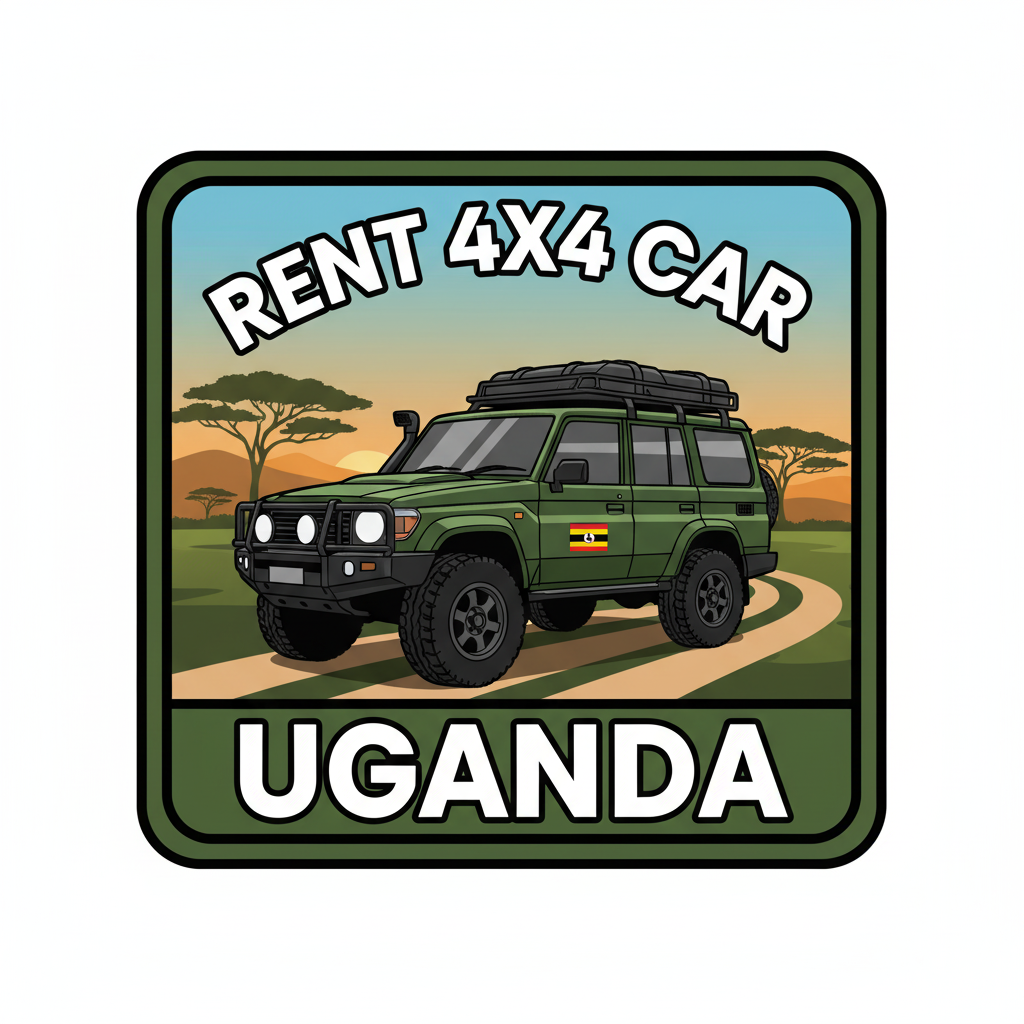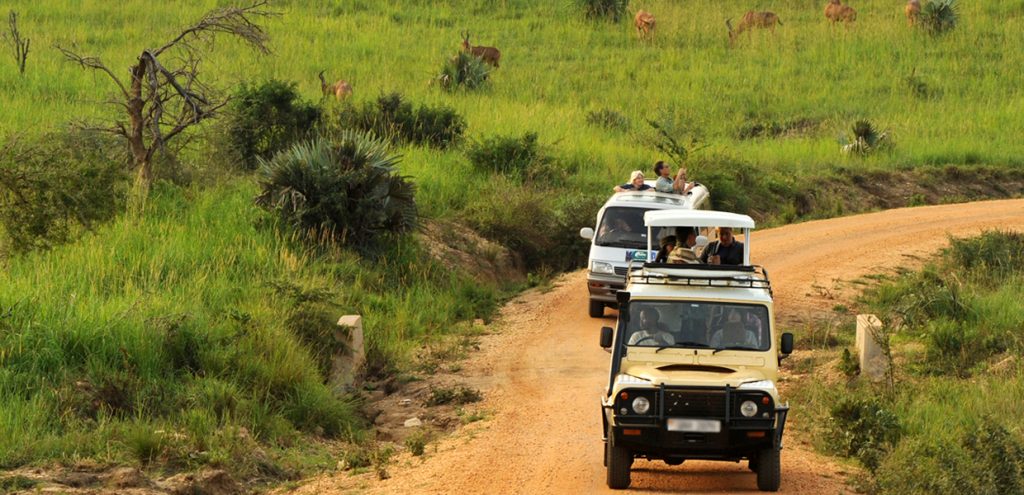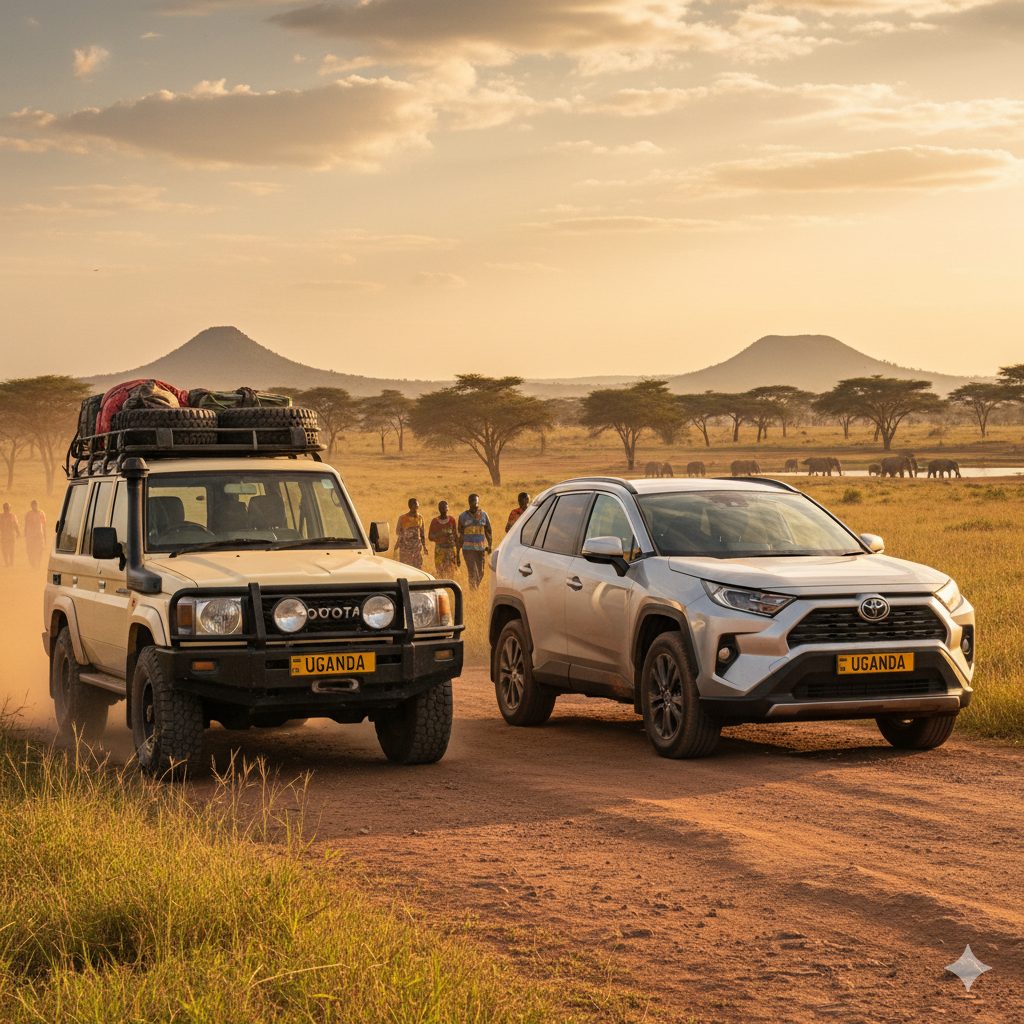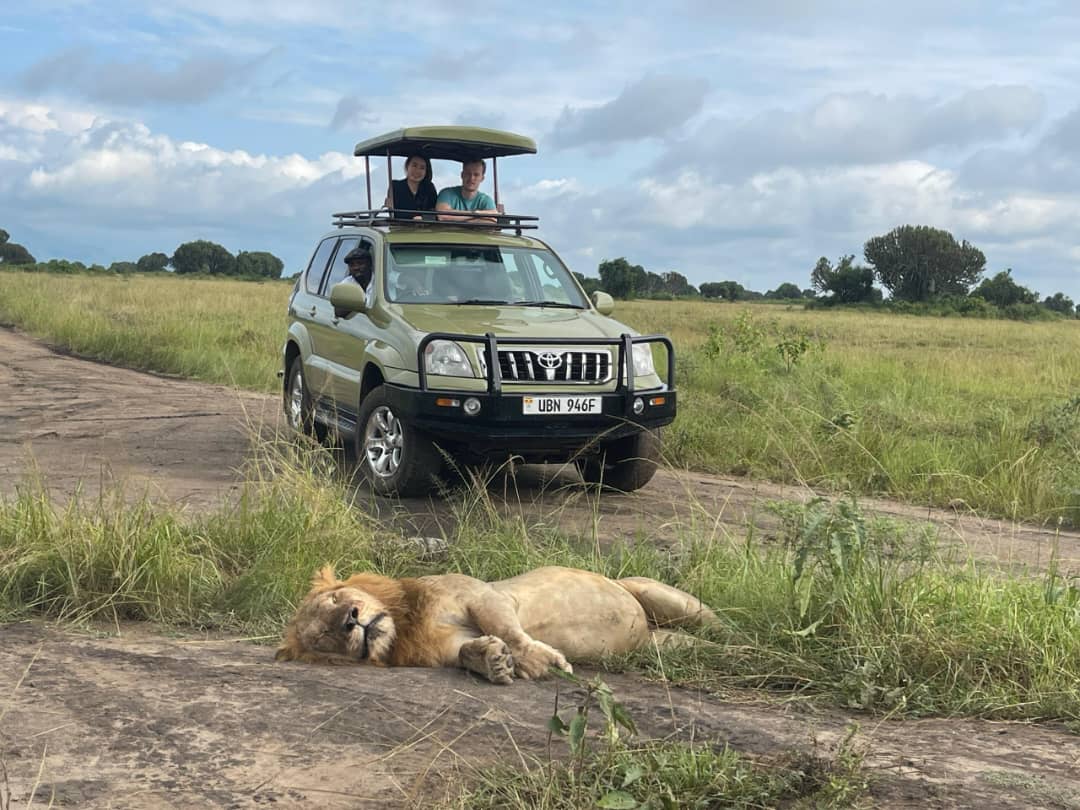Uganda offers some of the world's most amazing wildlife experiences, breathtaking landscapes, and rich cultural…
Top Features to Check When Booking 4×4 Rental Car in Uganda
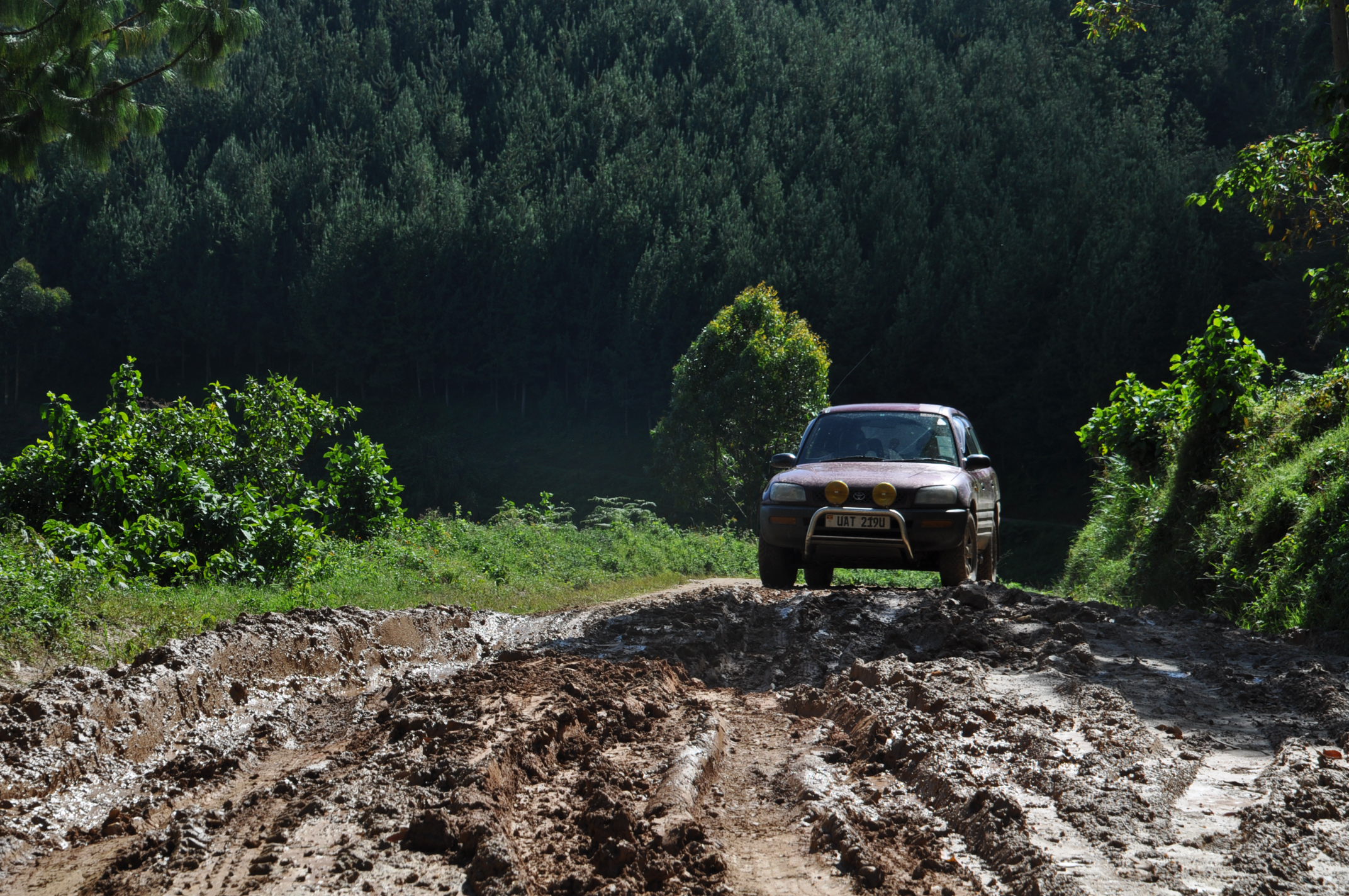
Uganda’s diverse terrain and adventurous safari destinations require reliable transportation that can handle everything from smooth tarmac roads to challenging off-road trails. Whether you’re planning to track mountain gorillas in Bwindi, explore the savanna of Queen Elizabeth National Park, or navigate the rugged paths to Murchison Falls, choosing the right 4×4 rental car in Uganda is crucial for a successful and safe journey. Understanding what features to prioritize when booking your rental can mean the difference between an amazing adventure and a frustrating experience stuck on remote roads.
1. Four-Wheel Drive System & Ground Clearance
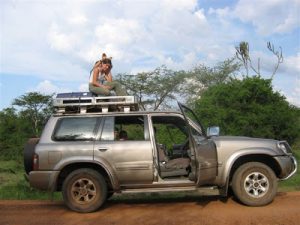 The most fundamental feature to verify is the type of four-wheel drive system your rental vehicle offers. In Uganda’s challenging terrain, you’ll need a true 4WD system rather than all-wheel drive (AWD). Look for vehicles with selectable 4WD systems that allow you to engage four-wheel drive when needed while maintaining fuel efficiency on paved roads. High and low-range gearing is essential for navigating steep inclines and rocky terrain commonly found on routes to national parks.
The most fundamental feature to verify is the type of four-wheel drive system your rental vehicle offers. In Uganda’s challenging terrain, you’ll need a true 4WD system rather than all-wheel drive (AWD). Look for vehicles with selectable 4WD systems that allow you to engage four-wheel drive when needed while maintaining fuel efficiency on paved roads. High and low-range gearing is essential for navigating steep inclines and rocky terrain commonly found on routes to national parks.
Ground clearance is equally critical, with a minimum of 200mm (8 inches) recommended for Uganda’s roads. Popular safari destinations like Bwindi Impenetrable National Park and Mgahinga require vehicles that can clear rocks, logs, and deep ruts without scraping the undercarriage. Vehicles like the Toyota Land Cruiser, Nissan Patrol, or Mitsubishi Pajero offer the ground clearance needed for Uganda’s challenging routes. Always confirm the exact ground clearance measurements with your rental company, as some modified vehicles may offer superior clearance.
2. Engine Power & Reliability
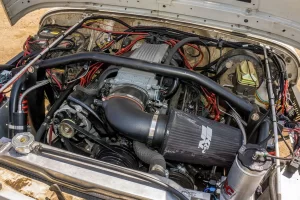 Uganda’s mountainous terrain demands sufficient engine power to handle steep ascents while carrying passengers and luggage. Diesel engines are generally preferred for their torque characteristics and fuel availability throughout the country. A minimum engine displacement of 2.5 liters is recommended, with 3.0 liters or larger being ideal for heavily loaded vehicles or particularly challenging routes.
Uganda’s mountainous terrain demands sufficient engine power to handle steep ascents while carrying passengers and luggage. Diesel engines are generally preferred for their torque characteristics and fuel availability throughout the country. A minimum engine displacement of 2.5 liters is recommended, with 3.0 liters or larger being ideal for heavily loaded vehicles or particularly challenging routes.
Engine reliability becomes paramount when traveling to remote areas where mechanical assistance may be hours away. Toyota Land Cruiser models are particularly favored in Uganda due to their proven reliability and widespread parts availability. Ask about the vehicle’s maintenance history and recent service records. Ensure the Uganda car rental company has performed recent oil changes, brake inspections, and cooling system checks, as overheating is a common issue on Uganda’s challenging roads.
3. Tire Condition & Spare Tire Availability
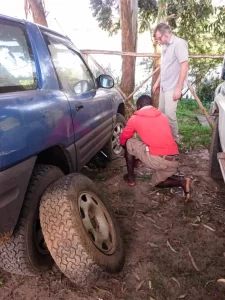 Tire condition can make or break your Uganda safari experience. Inspect the tread depth on all tires before accepting the vehicle, ensuring they have sufficient grip for both wet and dry conditions. Uganda’s roads can be particularly treacherous during rainy seasons, making good tire tread essential for safety. All-terrain tires are preferable to standard road tires, as they provide better traction on gravel roads and light off-road sections.
Tire condition can make or break your Uganda safari experience. Inspect the tread depth on all tires before accepting the vehicle, ensuring they have sufficient grip for both wet and dry conditions. Uganda’s roads can be particularly treacherous during rainy seasons, making good tire tread essential for safety. All-terrain tires are preferable to standard road tires, as they provide better traction on gravel roads and light off-road sections.
Confirm that the 4×4 car includes at least one full-size spare tire in good condition, though two spare tires are ideal for extended trips to remote areas. Verify that the spare tire is properly inflated and that the vehicle includes all necessary tools for tire changes, including a jack, lug wrench, and wheel chocks. Some Uganda car rental companies provide tire repair kits or portable air compressors, which can be invaluable for minor punctures in remote areas.
4. Safety Features & Emergency Equipment
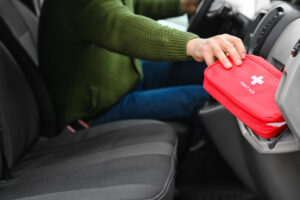 Safety features become critical when traveling Uganda’s remote roads, where help may be far away. Ensure your 4×4 rental vehicle includes functional seatbelts for all passengers, working headlights and taillights, and properly functioning brakes. Air conditioning, while not strictly a safety feature, can be essential for comfort during long drives and for preventing driver fatigue in Uganda’s tropical climate.
Safety features become critical when traveling Uganda’s remote roads, where help may be far away. Ensure your 4×4 rental vehicle includes functional seatbelts for all passengers, working headlights and taillights, and properly functioning brakes. Air conditioning, while not strictly a safety feature, can be essential for comfort during long drives and for preventing driver fatigue in Uganda’s tropical climate.
Emergency equipment should include a first aid kit, a fire extinguisher, warning triangles or reflectors, and a basic tool kit. Some car rental companies in Uganda provide emergency communication devices like satellite phones or GPS beacons for remote area travel. Confirm that the vehicle has a functioning horn and hazard lights, as these are often required for navigating Uganda’s busy roads and communicating with other drivers on narrow mountain passes.
5. Fuel Capacity & Consumption
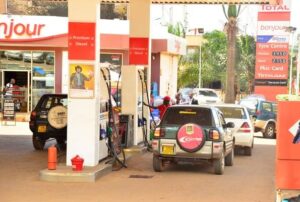 Fuel availability can be limited in remote areas of Uganda, making fuel capacity and efficiency important considerations. Look for vehicles with large fuel tanks that can provide extended range between fill-ups. Most suitable 4×4 vehicles for Uganda safaris have fuel capacities of 80-100 liters or more, providing sufficient range for round trips to remote national parks.
Fuel availability can be limited in remote areas of Uganda, making fuel capacity and efficiency important considerations. Look for vehicles with large fuel tanks that can provide extended range between fill-ups. Most suitable 4×4 vehicles for Uganda safaris have fuel capacities of 80-100 liters or more, providing sufficient range for round trips to remote national parks.
Understand the vehicle’s fuel consumption characteristics, particularly when operating in 4WD mode on challenging terrain. Diesel vehicles typically offer better fuel economy and torque for climbing, while petrol engines may provide better high-altitude performance. Ask about fuel consumption rates for different driving conditions and plan your fuel stops accordingly. Some rental companies provide fuel consumption estimates for specific routes to help with trip planning.
6. Interior Space & Luggage Capacity
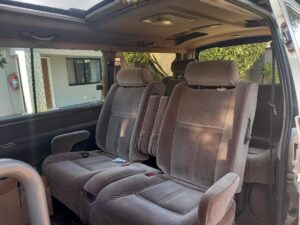 Uganda safari vehicles need to accommodate passengers comfortably while providing adequate storage for luggage, camping equipment, and supplies. Verify seating capacity and legroom, particularly for longer journeys to distant parks. Seven-seater vehicles are popular for family safaris, but ensure that using all seats doesn’t compromise luggage capacity.
Uganda safari vehicles need to accommodate passengers comfortably while providing adequate storage for luggage, camping equipment, and supplies. Verify seating capacity and legroom, particularly for longer journeys to distant parks. Seven-seater vehicles are popular for family safaris, but ensure that using all seats doesn’t compromise luggage capacity.
Roof racks can significantly increase cargo capacity but may affect fuel consumption and vehicle stability. If roof storage is important for your trip, confirm that proper tie-down equipment is included and that the roof rack system is properly secured. Some vehicles offer rear cargo barriers or nets to prevent luggage from shifting during off-road driving. Climate-controlled storage areas can be valuable for protecting sensitive equipment like cameras and electronics from Uganda’s humidity and dust.
7. Insurance Coverage & Breakdown Support
 Comprehensive insurance coverage is essential when driving in Uganda’s challenging conditions. Verify that your rental includes adequate third-party liability coverage, as this is legally required. Comprehensive coverage should include collision damage waiver (CDW) and theft protection, though these may come with deductibles that you should understand clearly.
Comprehensive insurance coverage is essential when driving in Uganda’s challenging conditions. Verify that your rental includes adequate third-party liability coverage, as this is legally required. Comprehensive coverage should include collision damage waiver (CDW) and theft protection, though these may come with deductibles that you should understand clearly.
More importantly, confirm what breakdown and recovery services are included with your rental. Uganda’s remote safari destinations can leave you stranded if mechanical problems occur, so 24-hour roadside assistance is invaluable. Some rental companies provide GPS tracking systems that can help locate vehicles in case of emergency. Understand the rental company’s policies for mechanical failures, including how quickly they can provide replacement vehicles or repairs in remote locations.
8. Communication & Navigation Systems
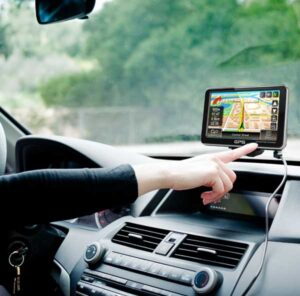 Reliable communication and navigation become critical when exploring Uganda’s remote areas where cell phone coverage may be intermittent. GPS navigation systems with offline maps are essential, as internet connectivity cannot be relied upon in many safari areas. Ensure the GPS includes detailed maps of Uganda with points of interest for national parks, accommodations, and fuel stations.
Reliable communication and navigation become critical when exploring Uganda’s remote areas where cell phone coverage may be intermittent. GPS navigation systems with offline maps are essential, as internet connectivity cannot be relied upon in many safari areas. Ensure the GPS includes detailed maps of Uganda with points of interest for national parks, accommodations, and fuel stations.
Some 4×4 rental vehicles in Uganda include satellite communication systems or emergency beacons that can summon help even in areas without cell coverage. Two-way radios can be valuable for convoy travel or communicating with lodge staff. Confirm that any communication equipment is properly programmed and that you understand how to operate it before departing on your safari.
9. Air Conditioning & Climate Control
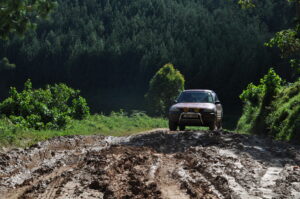 Uganda’s equatorial climate can be challenging, with high temperatures and humidity levels that make air conditioning more than just a comfort feature. Effective climate control becomes a safety issue during long drives, as it prevents driver fatigue and maintains alertness. Verify that the air conditioning system works effectively and can cool the entire passenger compartment quickly.
Uganda’s equatorial climate can be challenging, with high temperatures and humidity levels that make air conditioning more than just a comfort feature. Effective climate control becomes a safety issue during long drives, as it prevents driver fatigue and maintains alertness. Verify that the air conditioning system works effectively and can cool the entire passenger compartment quickly.
Consider that air conditioning places additional load on the engine and increases fuel consumption, which can be significant during long safari drives. Some vehicles offer dual-zone climate control that allows different temperature settings for driver and passengers. Ensure that air conditioning controls are easily accessible and that the system can operate effectively even when the vehicle is working hard in challenging terrain.
10. Uganda Car Rental Company Reputation & Support
 The rental company’s reputation and local support network can be as important as the vehicle itself. Research the company’s track record with other safari travelers and verify their local presence in key destinations. Companies with offices or representatives near major national parks can provide faster assistance if problems arise.
The rental company’s reputation and local support network can be as important as the vehicle itself. Research the company’s track record with other safari travelers and verify their local presence in key destinations. Companies with offices or representatives near major national parks can provide faster assistance if problems arise.
Confirm the rental company’s policies for route restrictions, as some companies prohibit travel to certain remote areas or require special permissions for off-road driving. Understand their policies for vehicle damage, late returns, and emergency situations. A reputable company should provide thorough vehicle orientation, including instruction on 4WD operation, emergency procedures, and local driving conditions.
Conclusion
Selecting the right 4×4 rental vehicle for your Uganda safari requires careful consideration of multiple factors beyond just price. The challenging terrain, remote locations, and variable road conditions throughout Uganda demand vehicles that combine reliability, capability, and safety features. Prioritizing proper 4WD systems, adequate ground clearance, tire condition, and comprehensive insurance coverage will help ensure your safari adventure proceeds smoothly.
Remember that the cheapest rental option may not provide the reliability and support needed for Uganda’s demanding conditions. Investing in a well-maintained vehicle from a reputable company with strong local support can prevent costly delays and safety issues that could compromise your entire safari experience. Take time to thoroughly inspect your rental vehicle before departure and ensure you understand all its systems and emergency procedures.
By focusing on these key features when booking your 4×4 rental, you’ll be well-prepared to explore Uganda’s incredible wildlife destinations safely and comfortably, allowing you to focus on the amazing experiences that await rather than worrying about vehicle reliability.
Planning a self drive or driver-guided adventure and would love to rent a 4×4 car in Uganda for your road trip- simply contact us now by sending an email to info@rent4x4caruganda.com or calling us on +256-700135510 to chat or speak with us today.
